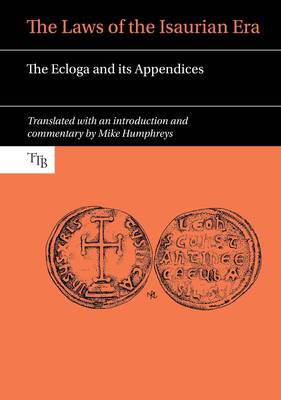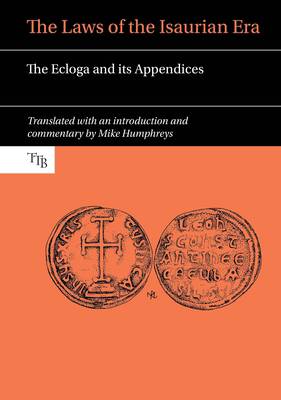
- Retrait gratuit dans votre magasin Club
- 7.000.000 titres dans notre catalogue
- Payer en toute sécurité
- Toujours un magasin près de chez vous
- Retrait gratuit dans votre magasin Club
- 7.000.0000 titres dans notre catalogue
- Payer en toute sécurité
- Toujours un magasin près de chez vous
The Laws of the Isaurian Era
The Ecloga and Its Appendices
Description
The eighth century was a turbulent time for Byzantium. Beset by war, plague and religious division, this remnant of the Rome fought for survival. Severe decline and dislocation necessitated far reaching reform and soul searching. In particular, Byzantines asked why God had so punished the Chosen People they believed themselves to be.
Attempting to formulate solutions to these problems were the new imperial dynasty, the Isaurians. Taking power in 717 as Constantinople was under siege by the Arabs, they would rule until 802 when Irene, the first empress to rule in her own right, was overthrown. However, our understanding of this critical period is clouded by the Iconoclast controversy, the debate over the validity of religious images that dominates the traditional narrative of the era. The vast majority of our sources were penned by the victors of that debate, the iconophiles, who make the controversy the driver of all events.
Fortunately, there is one set of sources that survives that is free from the prism of iconoclasm. For in 741 Leo III and Constantine V promulgated the Ecloga, a concise legal handbook that proved a watershed moment in Roman Law. Over the next three decades, it is argued, the Ecloga was buttressed with several further texts, before Irene used her own laws to attack the dynasty she had married into, and whose policy of iconoclasm she had reversed. For the first time all these texts are gathered together and translated, providing new insights into this crucial but murky period.
Spécifications
Parties prenantes
- Editeur:
Contenu
- Nombre de pages :
- 208
- Langue:
- Anglais
- Collection :
- Tome:
- n° 3
Caractéristiques
- EAN:
- 9781786940070
- Date de parution :
- 03-04-17
- Format:
- Livre relié
- Format numérique:
- Genaaid
- Dimensions :
- 150 mm x 211 mm
- Poids :
- 362 g

Les avis
Nous publions uniquement les avis qui respectent les conditions requises. Consultez nos conditions pour les avis.





